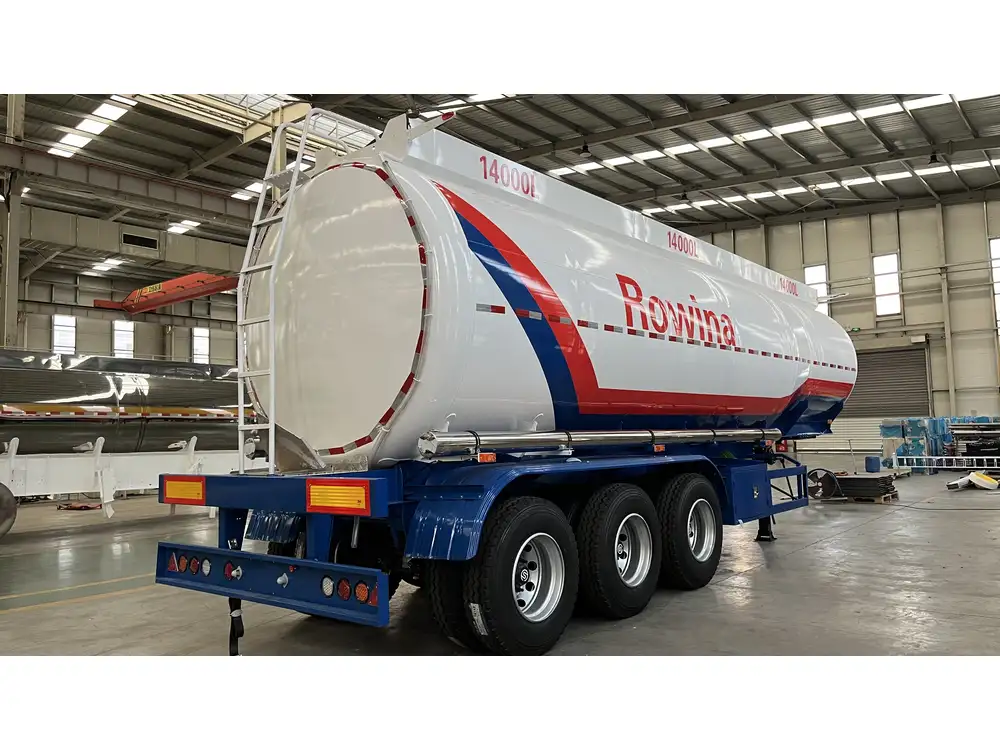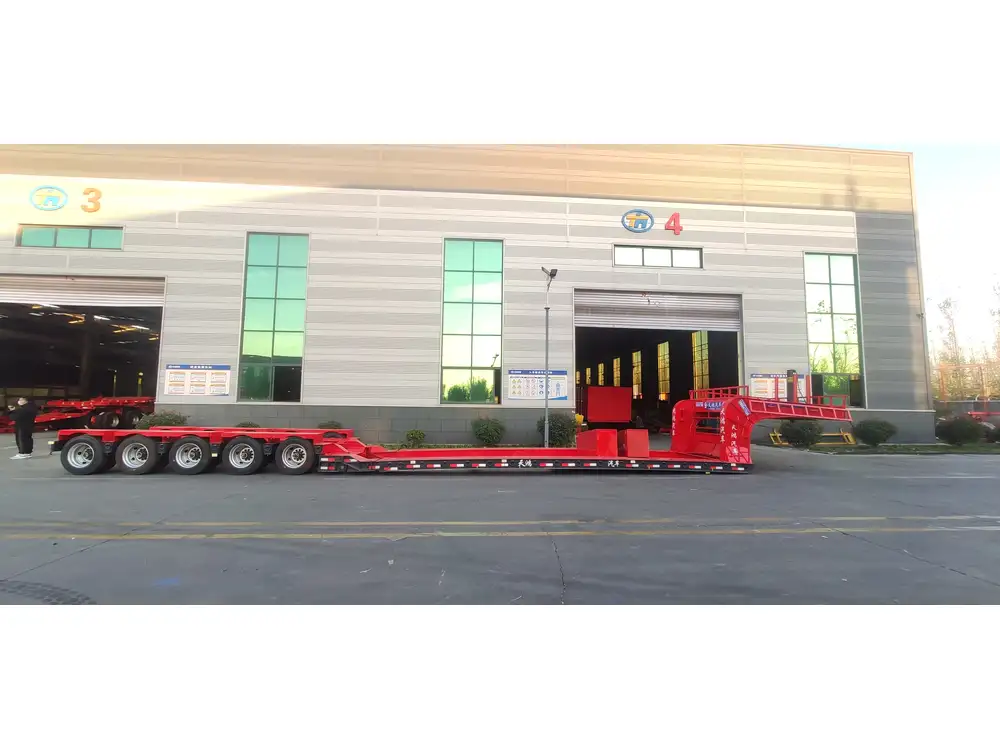In the realm of transportation and logistics, the flatbed trailer stands out as an indispensable asset, tailored for a multitude of hauls, from building materials to heavy machinery. As businesses aim to optimize their operations, understanding the weight aspects of flatbed trailers becomes paramount. Here, we delve into the critical components influencing the weight of flatbed trailers, their significance in the logistics chain, and the intricate factors affecting their capacities.
1. What is a Flatbed Trailer?
A flatbed trailer is an open trailer without sides or a roof, designed to facilitate the easy loading and unloading of cargo. Their construction allows for flexibility, accommodating oversized freight. The weight of a flatbed trailer can vary widely based on size, materials, and design.
| Flatbed Trailer Types | Typical Weight (lbs) |
|---|---|
| Standard Flatbed | 3,000 – 4,000 |
| Double Drop Flatbed | 4,000 – 5,000 |
| Step Deck Flatbed | 4,500 – 5,500 |
| Removable Gooseneck | 5,000 – 6,000 |
2. Factors Influencing Flatbed Trailer Weight

2.1 Trailer Construction Material
The construction material significantly impacts the weight of flatbed trailers. Common materials include:
- Steel: While robust and durable, steel is dense, considerably increasing the trailer’s weight.
- Aluminum: Lightweight and resistant to corrosion, aluminum trailers offer reduced weight but may come at a higher cost.
- Composite Materials: Emerging technologies utilize composite materials which can provide weight savings while maintaining strength.
2.2 Trailer Size and Design
The dimensions and design features of a flatbed trailer also play crucial roles in their weight capacity.
- Length: Standard lengths range from 20 to 53 feet, with longer trailers inherently weighing more due to the additional material and structural support.
- Width: Most flatbeds are 8.5 feet wide, yet wider models increase weight and influence hauling ampacity.
- Axles: The number and configuration of axles can substantially impact the weight distribution and maximum load capacity. Flatbeds typically come with two to three axles, with trailers having more axles supporting heavier loads.
2.3 Additional Equipment and Accessories
Accessories and additional equipment can increase a flatbed’s overall weight:
- Side Railing: While providing security for cargo, additional rails contribute to the overall weight.
- Tarping System: Installed tarps for protection against weather elements may add extra pounds.
- Winches and Toolboxes: Integral for securing loads but significant factors in overall trailer weight.

3. Understanding Gross Vehicle Weight Rating (GVWR)
The Gross Vehicle Weight Rating (GVWR) is a crucial parameter that indicates the maximum weight a flatbed trailer can safely haul, including cargo, the trailer itself, and any additional equipment. Knowing the GVWR helps logistics specialists determine the legal and safe loading parameters for both trailer and vehicular transport.
GVWR vs. Trailer Weight
- Unladen Weight: The weight of the trailer when empty. For example, a standard flatbed typically weighs between 3,000 and 4,000 lbs.
- Laden Weight: The total weight when fully loaded. Exceeding the GVWR can lead to equipment failures, potential legal ramifications, and unsafe transport conditions.
4. Calculating Payload Capacity
Calculating the payload capacity is simple, employing the following formula:
[ \text{Payload Capacity} = \text{GVWR} – \text{Unladen Weight} ]
Example Calculation:
For a flatbed trailer with:
- GVWR: 10,000 lbs
- Unladen Weight: 4,000 lbs
Payload Capacity = 10,000 lbs – 4,000 lbs = 6,000 lbs
Importance of Understanding Payload Capacity
Understanding payload capacity can help businesses avoid fines from exceeding weight limits set by transportation authorities. Additionally, proper knowledge prevents wear and tear on equipment, enhancing asset longevity and ensuring safe transport.
5. Legal Aspects of Flatbed Trailer Weight Regulations
Understanding regulations surrounding trailer weight is vital in transport operations to comply with legal and safety standards. Here are some critical regulations:

5.1 Federal Regulations
The Federal Motor Carrier Safety Administration (FMCSA) enforces weight regulations for commercial vehicles. Key points include:
- Maximum weight over axles limits (typically 20,000 lbs per axle and 34,000 lbs for group axles).
- Total allowable gross weight depending on trailer configuration.
5.2 State Regulations
In addition to federal regulations, each state may enforce unique weight restrictions. It’s imperative for businesses to research regional laws to avoid penalties and ensure compliance.
6. Advantages of Knowing Trailer Weight
Understanding the weight of your flatbed trailer offers a wide array of advantages:
- Cost Efficiency: Transporting an optimal weight helps avoid excess fuel consumption, thus offering savings.
- Safety: Preventing overloading reduces risks associated with equipment failure and accidents on the road.
- Operational Efficiency: Knowledge of trailer weight fosters better logistical planning and efficiency in freight management.

7. Maintenance and Weight Management
Maintenance plays a crucial role in ensuring your flatbed trailers remain within optimal weight specifications. Regular inspections of:
- Tires: Under-inflated tires can lead to excess wear and affect weight distribution.
- Frames and Suspension: Checking for any damage or fatigue ensures structural integrity.
- Load Distribution: Properly distributing weight across the trailer can prevent excessive strain on one section, considering axle load ratings.
8. Conclusion: Maximizing Your Flatbed Trailer Utilization
The weight of a flatbed trailer is not only a critical measurement but also a driving factor in the success of transportation and logistics operations. By meticulously understanding the variables affecting trailer weight, businesses can optimize their logistics strategies, ensuring operational effectiveness and compliance with weight regulations.
Incorporating this knowledge into daily operations supports enhanced safety, reduced costs, and improved efficiency overall. Whether you’re in logistics management or a contractor relying on transport, grasping the dynamics of flatbed trailer weight is indispensable. Increase your competitive edge, ensure safety, and enhance operational excellence by mastering the art of weight management in flatbed transportation.
By combining intricate details about flatbed trailers, their construction, regulations, and operational strategies within this detailed guide, we aim not only to provide valuable information but also to engage readers deeply, solidifying our authority in the trailer manufacturing sector.



